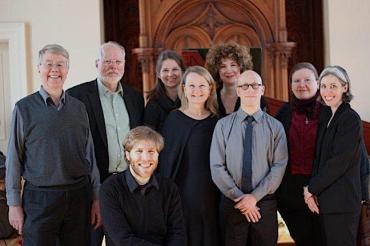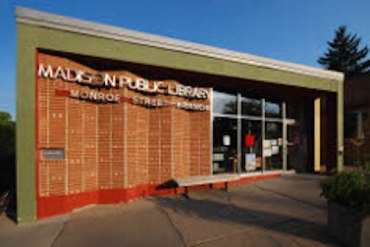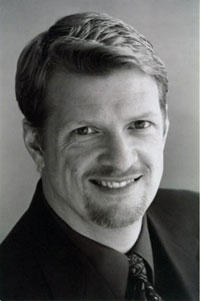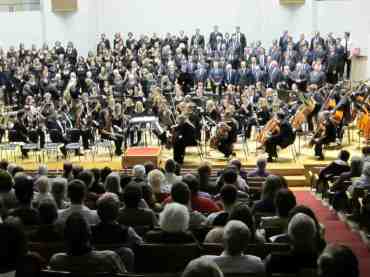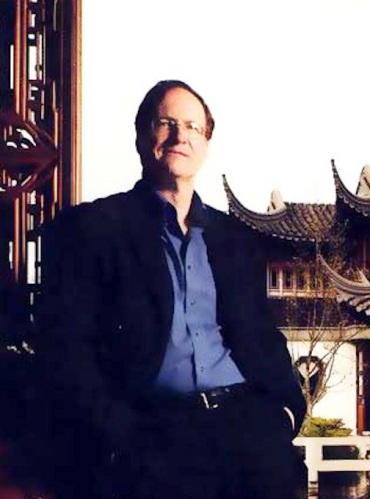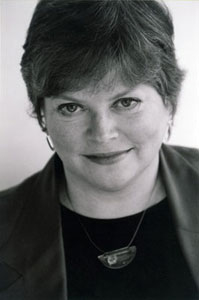The Well-Tempered Ear
Classical music: The Ear hears the impressive young pianist Joyce Yang and thinks Madison needs more piano recitals. Plus, a FREE concert of female vocal duets is at noon on Friday.
9 Comments
ALERT: This week’s FREE Friday Noon Musicale, held 12:15-1 p.m. at the First Unitarian Society of Madison, 900 University Bay Drive, will feature sopranos Susan Savage Day and Rebekah Demaree with pianist Sharon Jensen in duets by Gabriel Faure, Jacques Aubert, Jules Massenet, Claudio Monteverdi, UW-Madison alumnus Lee Hoiby and more.
By Jacob Stockinger
There he was last Thursday, sitting in the lower balcony in Shannon Hall at the Wisconsin Union Theater.
The Ear was in Piano Himmel, listening to a masterful performance.
The occasion was a solo piano recital by Joyce Yang (below), an up-and-coming, prize-winning Korea-born and America-trained pianist, still in her late 20s, who was making her Madison debut.
And the same thought haunted The Ear, himself an avid amateur pianist, that also came to him during a fine student piano recital this summer.
That thought was simply this: Madison needs to have many more solo piano recitals.
The piano is perhaps the one most commonly studied musical instrument and is a staple of music education, so the potential audience should be there. The repertoire is vast and wonderful. And the piano just hasn’t been receiving its due compared to the many new choral groups and chamber music ensembles that always seem to be proliferating in the area.
The Wise Teacher recalls years ago when almost a dozen solo piano recitals happened during a single season. This season there are only three -– and two have already taken place.
One was the recital of Mendelssohn, Franck and Chopin by Spanish pianist Daniel del Pino (below top) on Oct. 4 at Farley’s House of Pianos on its Salon Piano Series. (The Ear couldn’t go because he is was in Chicago that afternoon hearing a piano recital by Maurizio Pollini.) The second was by Joyce Yang. The third one will be the performance by UW-Madison virtuoso professor Christopher Taylor (below bottom) on Friday, Feb 26. (No program has yet been announced.)
Here is an afterthought: Maybe the Madison Symphony Orchestra could start a piano series like the Chicago Symphony Orchestra offers on Sunday afternoons?
Let’s be clear: This is a matter more of pleasure and education than of justice.
Take Yang’s performance, which drew an unfortunately small house of only 300-400.
The first half was remarkable for both the clarity and color she possessed. Ethnic themes, folk songs and folk dances, especially Latin American and Spanish in nature, united the first half of her program.
She opened with two sonatas by Domenico Scarlatti, the three “Estampes” or Prints by Claude Debussy and two pieces from “Iberia” by Isaac Albeniz and three virtuosic “cowboy” dances by the Argentinian composer Alberto Ginastera.
In all those works, Yang proved a complete and mature keyboard artist. Her technique is rock solid, but it is her musicality that most impresses the listener. The Ear was particularly struck by Yang’s command of dynamics, her ability to play softly and still project, and to delineate and balance various voices.
The second half, all works by Sergei Rachmaninoff, proved less satisfying to The Ear, if not to the audience. It featured two transcriptions of vocal works or songs — “Dreams” and “Vocalise” — by the late American virtuoso pianist Earl Wild (below).
Unfortunately, Wild himself possessed a Lisztean (or Horowitzean) command of keyboard technique. And like Franz Liszt (or Vladimir Horowitz), Wild just couldn’t resist adding Liberace-like flourishes, flash and trash to his transcriptions in places where simplicity rather than Big Chords would have more than sufficed.
At certain points in a Wild transcription, the work inevitably sounds louche or decadent and over-the-top, like something you might hear at a piano bar or in a cocktail lounge. In short, they are more piano than music. (You can listen to Earl Wild himself performing his own transcription of Rachmaninoff’s “Vocalise” in a YouTube video at the bottom.)
Then came the Sonata No. 2 in B-flat minor by Rachmaninoff (below) in its revised 1931 edition. To be honest, this is a Big Piece that is full of sound and fury signifying not very much that The Ear can discern. (The Ear much prefers Rachmaninoff’s piano concertos, preludes and Etudes Tableaux.)
To be sure, the bombastic sonata requires impressive and powerful piano playing, which must explain the muscular work’s popularity among professional pianists and certain segments of the public. It is a Wower and wow us it does, although many of us would rather be seduced than wowed.
The sonata surely is effective in live performance and brought an immediate standing ovation. That, in turn, was rewarded with another Earl Wild transcription this time of George Gershwin’s “The Man I Love.” Too bad the love once again seemed overpowered by difficult but flawlessly executed scales and runs.
But putting those shortcomings aside, the sound of an amazingly played piano recital was such a welcome experience.
The Ear hopes that many more of them are somehow in store.
Tags: Argentina, Arts, Chicago Symphony Orchestra, Chopin, Christopher Taylor, Classical music, concerto, dance, Daniel del Pino, Debussy, Domenico Scarlatti, Dreams, duet, Earl Wild, Estampes, etude, Farley's House of Pianos, Faure, First Unitarian Society of Madison, folk dance, Folk music, Franck, George Gershwin, Ginastera, Horowitz, Iberia, Isaac Albéniz, Jacob Stockinger, Joyce Yang, Jules Massenet, Korea, Lee Hoiby, Liberace, lieder, Liszt, Madison, Madison Symphony Orchestra, Mendelssohn, Monteverdi, Music, music educaiton, Musical instrument, Piano, Piano concerto, Prelude, prints, recital, Sonata, songs, soprano, Spain, student recitals, The Man I Love, transcription, United States, University of Wisconsin-Madison School of Music, University of Wisconsin–Madison, Vladimir Horowitz, vocal music, vocalise, Wisconsin, Wisconsin Union Theater, YouTube
Classical music: The local woodwind group Black Marigold will perform four FREE summer concerts at public libraries and the Chazen Museum of Art over the next two weeks.
Leave a Comment
By Jacob Stockinger
The Ear’s friends at the Madison-based woodwind quintet Black Marigold (below) -– founded in 2012 — write with the following information:
The Marigolds are in bloom!
Join us for our fourth annual Summer Concert Series, featuring 20th- and 21st-century pieces by French, Czech and American composers.
The program includes: “Calder’s Circus” by Robert Cohen; Diversions for Wind Quintet by Lee Hoiby (below), who studied at the UW-Madison School of Music; Wind Quintet, Op. 10, by Pavel Haas; and Quintet No. 1 by Jean Francaix.
All concerts are free and open to the public.
Here is a schedule:
MONDAY, August 24, 2015 – 7 p.m.
1705 Monroe St – Madison, WI
SATURDAY, August 29, 2015 – 7 p.m.
CapitolLakes Retirement Community – Grand Hall
333 West Main Street, Madison, WI
FRIDAY, September 4, 2015 – 7 p.m.
OakwoodVillage University Woods
6201 Mineral Point Rd – Madison, WI
SundayAfternoon Live at the Chazen
Sunday, September 6, 2015 – 12:30 p.m.
750 University Avenue
Madison, WI 53706
This performance will also be live streamed on the Chazen website.
For more information, contact or visit blackmarigoldwinds@gmail.com
video
Tags: Alexander Calder, America, American music, Arts, Bassoon, Black Marigold, Chamber music, Chazen Museum of Art, clarinet, Classical music, Czech music, Czech Republic, flute, France, French music, French usic, Horn, Jacob Stockinger, Jean Francaix, Lee Hoiby, library, Madison, Music, Oboe, Pavel Haas, public library, quintet, Robert Cohen, United States, University of Wisconsin-Madison School of Music, University of Wisconsin–Madison, Wind quintet, winds, Wisconsin, woodwind, Woodwind quintet, YouTube
Classical music Q&A: American composer Robert Kyr discusses: What should audiences listen for in this weekend’s two performances by the UW Choral Union of his “Passion According to Four Evangelists”? How does the prolific Kyr describe the sound and style of his music? What does he think of his ties to Madison? Part 2 of 2. Plus. the UW Chorale performs a FREE concert Friday night.
Leave a Comment
ALERT: On this Friday, April 26, at 8 p.m. in Mills Hall, the UW-Madison Chorale will perform a FREE and PUBLIC concert under conductor Bruce Gladstone (below, in a photo by Katrin Talbot) with pianist Martha Fischer and student conductor Luke Hrovat-Staedter. Included on the program are John Rutter‘s “The Falcon” as well as works by Handel, Mathais, Hindemith, Ivor Gurney, UW alumnus Lee Hoiby, La Crosse composer Bob Willoughby, and the world premiere of UW alumnus Scott Gendel’s “The Singing Place.” This high-level group of 60 singers performs a varied repertoire. Most singers in Chorale have significant vocal and choral experience, and many are voice majors.
By Jacob Stockinger
This coming weekend will see two performances of Robert Kyr’s “The Passion According to Four Evangelists” by the campus-community UW Choral Union, the UW Chamber Orchestra and four soloists, all under the baton of UW choral director Beverly Taylor.
The soloists are soprano Anna Slate, mezzo-soprano Jennifer D’Agostino, tenor James Doing and baritone Paul Rowe.
The concert are in Mills Hall on Saturday at 8 p.m. and Sunday night at 7:30 p.m. (NOT at 3:30 p.m. as mistkenly first printed in yesterday’s post.) Tickets are $15 for the General Public and $8 for students and seniors. Call the Box Office: (608) 265-2787. Remaining tickets are sold at the door.
Also: The American composer Robert Kyr will do half-hour pre-concert lectures in Mills Hall for TICKETED patrons one hour before each concert. UW students are NOT admitted free to these concerts. Saturday’s lecture 7-7:30 p.m. with the concert at 8 p.m. Sunday’s lecture is 6:30-7 p.m. with the concert at 7:30 p.m.
For background, here is a link to a fascinating NPR story about and interview with Robert Kyr:
The composer — who is personally and artistically committed to social justice and non-violent activism for peace — graciously agreed to an email Q&A with The Ear. Yesterday’s post offered Part 1; here is Part 2.
How would you describe your musical style overall and especially in that work?
My work features what I like to call a “spectrum of harmony” that is primarily consonant, but also dissonant as required for specific expressive purposes.
The engine of my music is counterpoint—the composing of musical line against line. Almost all of my music is an interweaving of melodic lines (in the manner of Bach, for instance), as opposed to the musical currency of our day, which is textural music or homophony (chords, or a melodic line accompanied by chords).
Although I was born in the 20th century, I have always felt (from my teen years onward) that I was a 21st century composer, and I’m more in tune with the eclecticism and vitality of the current 20-something and 30-something composers than my own generation.
In that sense, I am a composer who strives to synthesize many artistic concerns and interests into an organic musical expression. In regard to influences, I am most deeply connected to the music of the medieval, Renaissance and Baroque periods (the “contrapuntal periods”), especially the music of Guillaume Dufay (the isorhythmic motets), Josquin (his motets and masses), and above all, J. S. Bach.
You have worked and partnered with Beverly Taylor (below, in a photo by Katrin Talbot) before. Can you talk about how the two of got to know each other and what you think of her as a performer and interpreter of your works (she has done several, I believe) .
Bev and I met at Harvard University, where she was the director of the Radcliffe Choral Society when I was a doctoral student. She commissioned me to create a work for a cappella women’s chorus for RCS, which was entitled “Toward Eternity.” We became friends through our first collaboration, and shortly thereafter, Bev invited me to create a large-scale work for her Boston community chorus, the Back Bay Chorale.
Together, Bev and I hatched the plan of co-creating The Passion according to Four Evangelists for her ensemble, and she continually inspired me with her insights and wise musical advice. I’m extremely grateful to her for her vision and artistry, and I’m deeply moved by her performances, which convey a profound understanding of the interior life of a musical expression, as well as a complete “living out” of its sonic architecture and emotional depth.
I think you were in Madison for the last performance of this work. Will you be here this time and do you have any impressions of Madison and the UW Choral Union and choral and orchestral programs you would like to share?
Without a doubt, the UW Choral Union is one of the finest choruses in the country and is distinguished by its rich, vibrant, and clear sound, as well as its ability to express the emotional and psychological intricacies of large-scale works. The collaboration of Bev and the chorus is a “marriage made in heaven,” an ideal merging of artistic vision, poetic imagination, and true musical inspiration. (Below is a YouTube video of Kyr discussing his Holocaust Project work “The Unutterable,” which was premiered by Chorus Austin.)
I am thrilled that I’m able to come to Madison — a city that I love —and the University of Wisconsin (my father’s alma mater) for rehearsals and both performances of my Passion. I very much look forward to collaborating again with Bev, the soloists, the Choral Union, and the UW Symphony Orchestra.
Tags: Baton Rouge, Baton Rouge Louisiana, Beverly Taylor, Choir, Four Evangelists, Harvard University, Jacob Stockinger, Johann Sebastian Bach, John Rutter, Lee Hoiby, Madison, Mary, Mary Magdalene, Paul Rowe, Radcliffe Choral Society, Robert Kyr, Scott Gendel, Sunday, University of Wisconsin–Madison, UW Choral Union, YouTube





